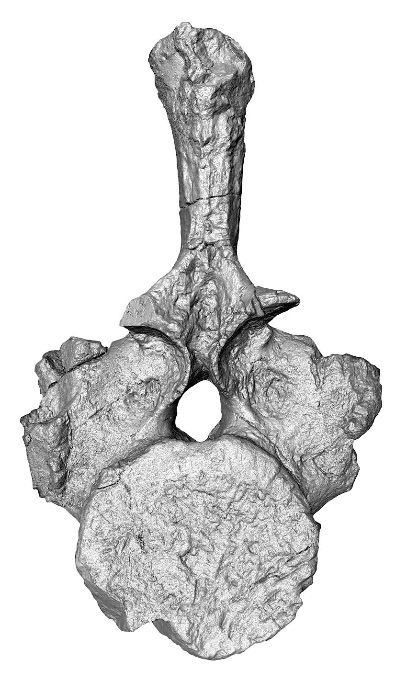
The Early Triassic nothosaur fossil vertebra was found in 1978 at Balmacaan Stream by Doug and Hamish Campbell and is part of the National Paleontological Collection held at GNS Science.
Reptiles like the nothosaur ruled the seas for millions of years before dinosaurs dominated the land, GNS Science said in a statement.
"The most diverse and geologically longest-surviving group - with a fossil record covering over 180 million years - were the sauropterygians, which included the iconic long-necked plesiosaurs resembling the popular image of the Loch Ness monster.
"The distant forerunners of plesiosaurs are called nothosaurs and may have grown up to seven metres in length.
"Nothosaurs swam using their four paddle-like limbs and had flattened skulls with a meshwork of slender conical teeth that would have been used to catch fish and squid.
"Competing arguments had suggested that nothosaurs either migrated along northern polar coastlines, swam through short-lived inland seaways, or rode prevailing currents to traverse half a world of open ocean during a critical timeframe of marine ecosystem recovery around 4-6 million years after the end-Permian mass extinction. "

"Adding the New Zealand nothosaur to a time-calibrated evolutionary model of sauropterygian geographical distributions further pinpointed the origin of the group to northeastern low-latitudes at the very beginning of the Age of Dinosaurs," GNS Science said.
"The beginning of the Age of Dinosaurs experienced extreme global warming during which sea-going reptiles clearly thrived at the South Pole.
"This indicates that the ancient polar regions were a likely pathway for their initial global migrations, and that more fossil remains of long extinct leviathans undoubtedly await discovery in New Zealand and elsewhere throughout the southern hemisphere.
"The nothosaur vertebra, discovered in 1978 at Balmacaan Stream by Doug and Hamish Campbell, is part of the National Paleontological Collection held at GNS Science.
GNS Science collection manager Marianna Terezow said: “This fossil showcases the importance Aotearoa New Zealand’s paleontological record plays on the world stage of understanding Earth’s history.”
“It is also a great example of the long-standing value of natural history collections and their stories yet untold.”












